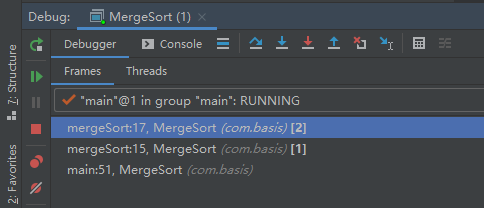空格输入规范
sc.nextLine();吸收上一个空格符String[] strings = sc.nextLine().trim().split(" ");for (int i = 0; i < listSize; i++) {q[i] = Integer.parseInt(strings[i]);}
两个nextInt
int num = sc.nextInt();int num1 = sc.nextInt();console1 2
for (int i = 0; i < listSize; i++) {nums[i] = sc.nextInt();}
输入char数组
str = sc.next().toCharArray();rightStr = sc.next().toCharArray();
next()和nextLine()的区别
next():
1、一定要读取到有效字符后才可以结束输入。以空格、回车、Tab键都会视为结束符。。
2、对输入有效字符之前遇到的空白,next() 方法会自动将其去掉。
3、只有输入有效字符后才将其后面输入的空白作为分隔符或者结束符。
next() 不能得到带有空格的字符串。
nextLine():
1、以Enter为结束符,也就是说 nextLine()方法返回的是输入回车之前的所有字符。
2,可以获得空白
BufferRead更快!
BufferedReader reader = new BufferedReader(new InputStreamReader(System.in));
String[] strs = reader.readLine().split(" ");
reader.close();
初始化
所有初始化的只要不是包装类,默认int为0,boolean为false,string为
包装类则初始值都为null
布尔值直接放进去都是判断是否为true,加上!判断是否为false
debug
算法思路
先把整个算法的一个框架写上,框架里的一些辅助变量都写上,方便我们走思路的时候能直接用上。
学算法要拿张纸出来写,不要空想,画一画。不画就是口算,难度大
输出不规范
最大暴力范围
在c++中用1e5表示,1e5 = 10。


